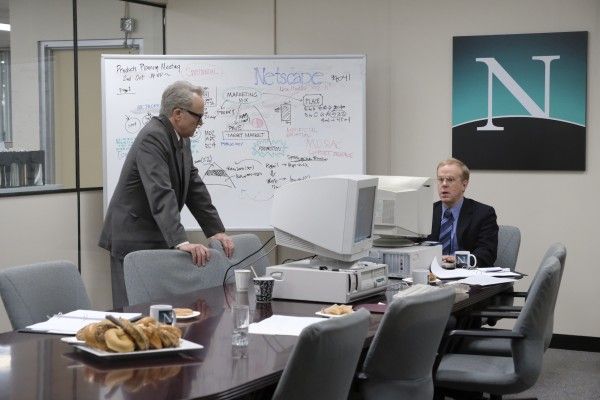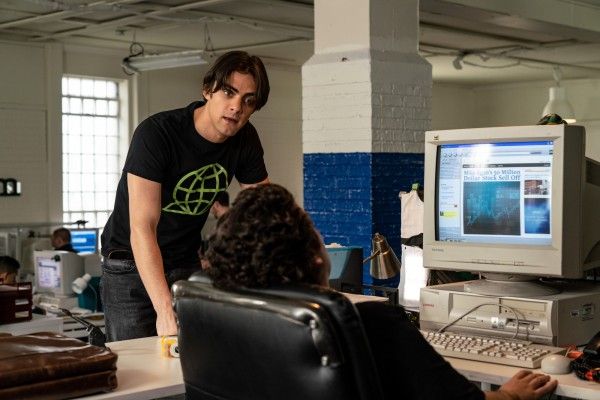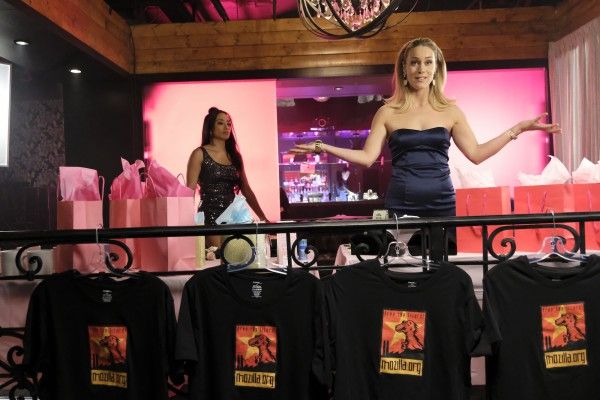Watching NatGeo’s Valley of the Boom, which chronicles the early days of the 90s’ browser wars through to the dot-com bust of the 2000s, is like watching history repeat itself. The events portrayed are well-documented and certainly not that far in the past; a quarter-century later, the exact same patterns and language used in this program — that is, the billionaire bubbles around innovative tech creators — are once again true. It’s discouraging, really, to hear that we as a society, tech as an industry, and the greed of the investment sector have really learned nothing. Welcome to Silicon Valley!
Valley of the Boom doesn’t connect the dots of that dot-com boom to the flood of apps and streaming platforms today, or how the bullying behemoth Microsoft was just a precursor to companies like Facebook and Google. Instead, it takes a scattershot approach of mixing documentary-style interviews with a variety of narratives. These narratives are a step up from reenactments, but don’t stand on there own as much as the futuristic tales of NatGeo’s other docs-narrative hybrid series Mars do. Instead, the 90s-set scenes that feature the very people who are being interviewed, just 25 years younger, are mostly excuses to see Steve Zahn in a bad wig and a fat suit and Bradley Whitford spitting out homegrown aphorisms like “kill the snake” in a southern drawl.
There are three stories being told that are interwoven with the interviews: the rise of Netscape, which fought Microsoft and was eventually acquired by AOL; the building up of TheGlobe.com, a precursor to Facebook; and the curious tale of the video streaming site Pixelon, founded and run (for a time) by a con artist. Each story provides a different angle on a period in time when investors were suddenly going crazy over companies that hadn’t turned a profit yet (sound familiar?), but more importantly, a time when the internet actually became something regular people could and were tapping into. As is often satirized in episodes of HBO’s comedy Silicon Valley (which takes place in the present day), the founders of most of these companies all say with starry-eyed optimism that they wanted to change the world.
In many ways they did, and as a history lesson, Valley of the Boom is interesting enough for those who don’t know or weren’t around for the particulars of how the World Wide Web was won (or at least, how it evolved and was monetized). The series does a few innovative things of its own, stylishly including animation, interpretive dance, and even a classic mid-90s rap battle to explain that history in more dynamic ways. And yet, the story of many, many white males making obscene amounts of money very quickly is not one that is particularly innovative or dynamic or interesting at this particular moment. It may have been a truth of the time, but another perspective on the story would have probably been a lot more interesting.
As such, women and people of color appear only on the fringes here — they’re essentially non-existent in the reenactment scenes, although former Netscape employees Spence Murray and Tara Hernandez are interviewed in the present about the industry in general. Particularly unfortunate is that the only real time given to women of the era comes in a cringe-worthy portrayal of Patty Beron’s younger self, shown here as an extremely obnoxious San Francisco party girl, whereas Beron herself (interviewed now) seems a world away from that persona. And yet, the inclusion is a worthwhile note about how such a big industry attracts other innovations around it, including “pink slip parties” when everything went belly-up.
Netscape founder Jim Clark and James Barksdale, along with The Globe’s Todd Krizelman and Stephan Paternot are also interviewed in the 6-episodes limited series, which comes from EPs Matthew Carnahan and Arianna Huffington (with Carnahan showrunning). Additional staffers, journalists, and commentators of the time (including Marc Cuban) also weigh in on the bubble and bust, with New Girl’s Lamorne Morris serving as a fictional amalgam of all of the Wall Street investors of the era. But Valley of the Boom never really comes together as feeling essential or narratively compelling, perhaps because it’s a story we’re also living through now, or because its many narratives and interviewees cover so many different facets of the era that it’s hard to get a sense of what the real throughline is meant to be. The series somehow spends both too much time and too little with its various subjects.
As such, the show’s intent is not always clear, particularly when it comes to tone. It breaks the fourth wall for a meta joke, but reminisces about good times. Is it earnest? Is it in-jokey? The reenactment narratives are certainly heightened (made all the more obvious by the people interviewed who seem nothing like the characters based on them), but there is also a genuine desire from the pundits to hammer home a point about how innovative and important this era was. In the next moment, we have Steve Zanh in mascara doing Am-dram.
For tech enthusiasts or for those looking to see how the formative dot-com years clearly inform the present, Valley of the Boom’s skimming voyage across the biggest moments in Silicon Valley’s late-90s scene is educational, and even a little nostalgic. But it also feels like a missed opportunity to dive deeper into what should have been learned (and wasn’t) in terms of tech growth, or to explore a different prospective other than from those who happened to ride a investment wave at exactly the right time.
Rating: ★★
Valley of the Boom premieres Sunday, January 13th on NetGeo.






